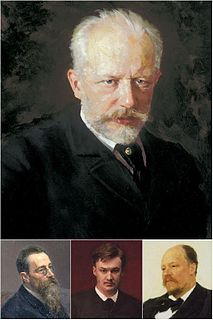 W
WRomantic music is a stylistic movement in Western orchestral music associated with the period of the nineteenth century commonly referred to as the Romantic era. It is closely related to the broader concept of Romanticism—the intellectual, artistic and literary movement that became prominent in Europe from approximately 1800 until 1920.
 W
WA character piece is a musical composition which is relatively brief and is expressive of a specific mood or non-musical idea. Character pieces are often initially composed for piano.
 W
WIn music, a chorale prelude or chorale setting is a short liturgical composition for organ using a chorale tune as its basis. It was a predominant style of the German Baroque era and reached its culmination in the works of J.S. Bach, who wrote 46 examples of the form in his Orgelbüchlein, along with multiple other works of the type in other collections.
 W
WThe New German School is a term introduced in 1859 by Franz Brendel, editor of the Neue Zeitschrift für Musik, to describe certain trends in German music. Although the term has frequently been used in essays and books about music history of the 19th and early 20th centuries, a clear definition is complex.
 W
WThe early romantic guitar, the guitar of the Classical and Romantic period, shows remarkable consistency from 1790 to 1830. Guitars had six or more single courses of strings while the Baroque guitar usually had five double courses. The romantic guitar eventually led to Antonio de Torres Jurado's fan-braced Spanish guitars, the immediate precursors of the modern classical guitar.
 W
WIn mid- to late-19th-century Russia, Pyotr Ilyich Tchaikovsky and a group of composers known as The Five had differing opinions as to whether Russian classical music should be composed following Western or native practices. Tchaikovsky wanted to write professional compositions of such quality that they would stand up to Western scrutiny and thus transcend national barriers, yet remain distinctively Russian in melody, rhythm and other compositional characteristics. The Five, made up of composers Mily Balakirev, Alexander Borodin, César Cui, Modest Mussorgsky, and Nikolai Rimsky-Korsakov, sought to produce a specifically Russian kind of art music, rather than one that imitated older European music or relied on European-style conservatory training. While Tchaikovsky himself used folk songs in some of his works, for the most part he tried to follow Western practices of composition, especially in terms of tonality and tonal progression. Also, unlike Tchaikovsky, none of The Five were academically trained in composition; in fact, their leader, Balakirev, considered academicism a threat to musical imagination. Along with critic Vladimir Stasov, who supported The Five, Balakirev attacked relentlessly both the Saint Petersburg Conservatory, from which Tchaikovsky had graduated, and its founder Anton Rubinstein, orally and in print.
 W
WPyotr Ilyich Tchaikovsky's relations with the group of composers known as the Belyayev circle, which lasted from 1887 until Tchaikovsky's death in 1893, influenced all of their music and briefly helped shape the next generation of Russian composers. This group was named after timber merchant Mitrofan Belyayev, an amateur musician who became an influential music patron and publisher after he had taken an interest in Alexander Glazunov's work. By 1887, Tchaikovsky was firmly established as one of the leading composers in Russia. A favorite of Tsar Alexander III, he was widely regarded as a national treasure. He was in demand as a guest conductor in Russia and Western Europe, and in 1890 visited the United States in the same capacity. By contrast, the fortunes of the nationalistic group of composers known as The Five, which preceded the Belyayev circle, had waned, and the group had long since dispersed; of its members, only Nikolai Rimsky-Korsakov remained fully active as a composer. Now a professor of musical composition and orchestration at the Saint Petersburg Conservatory, Rimsky-Korsakov had become a firm believer in the Western-based compositional training that had been once frowned upon by the group.
 W
WThe transition from the classical period of Western art music, which lasted around 1750 to 1820, to Romantic music, which lasted around 1815 to 1910, took place in the eighteenth and nineteenth centuries. Composers began transitioning their compositional and melodic techniques into a new musical form which became known as the Romantic Era or Romanticism due to the implementation of lyrical melodies as opposed to the linear compositional style of Classical music.